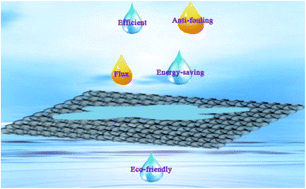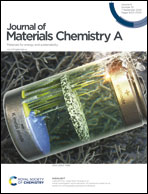Designing novel superwetting surfaces for high-efficiency oil–water separation: design principles, opportunities, trends and challenges
Abstract
Membrane filtration and absorption strategies based on superwetting surfaces for oil–water separation have regained tremendous attention due to their being low cost, highly efficient and environmentally friendly. Besides the usual superhydrophobic, superhydrophilic/underwater superoleophobic and dual superlyophobic surfaces, very novel and unprecedented surfaces with special extreme wetting behavior have been widely used in oil–water separation. In this review, novel surfaces with extreme wetting behavior for oil-water separation reported over the past three years including superhydrophilic–superoleophobic, superamphiphobic, superhydrophilic-underoil superhydrophilic, underoil superhydrophobic-underwater superoleophobic and liquid-infused surfaces, as well as oil–water separation mechanisms, separation approaches and design principles for obtaining novel superwetting membranes, are systematically summarized. The most common problems in the process of oil–water separation-membrane pollution and solutions are discussed. In addition, the selection of substrates, the swelling of hydrophilic membranes and the wettability conversion of intelligent response membranes are analyzed. The current trends, challenges and future research opportunities are also proposed, providing a road map for the future development of high-efficiency oil–water separation technology.



 Please wait while we load your content...
Please wait while we load your content...